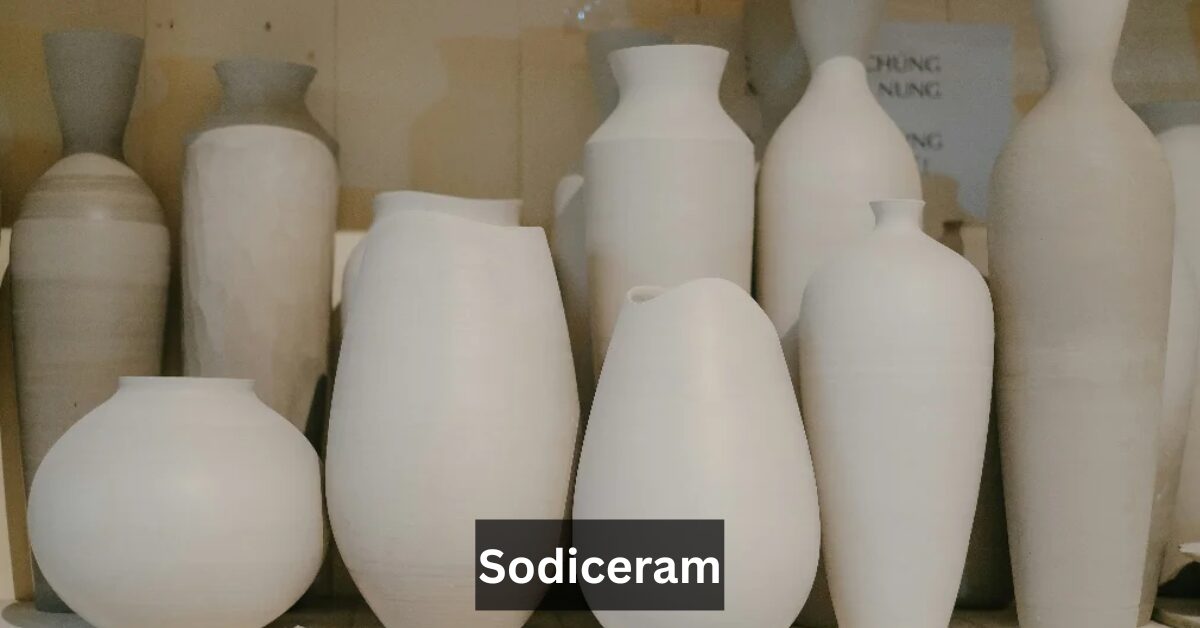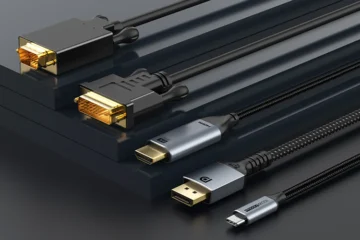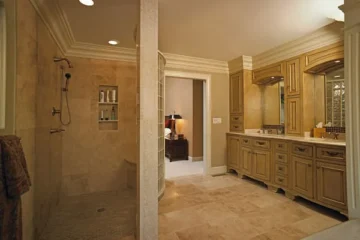Sodiceram is revolutionizing the world of ceramics, combining innovation, durability, and sustainability into one high-performance material. As a sodium-infused ceramic, Sodiceram enhances the structural integrity and longevity of traditional ceramics while offering unique aesthetic and functional benefits. Its applications span architecture, industrial manufacturing, art, and advanced material science, making it a versatile choice for both commercial and residential projects.
The importance of advanced ceramic materials like Sodiceram in modern applications cannot be overstated. Traditional ceramics often fall short when exposed to extreme heat, chemical environments, or mechanical stress. Sodiceram addresses these challenges through chemical-resistant ceramics, thermal shock-resistant ceramics, and improved mechanical strength enhancement, positioning itself as a future-proof solution for designers, engineers, and manufacturers. In this article, we will explore the science, benefits, applications, and innovations surrounding Sodiceram, providing readers with a comprehensive understanding of this groundbreaking material.
What is Sodiceram?
Definition and Composition
Sodiceram is a specially engineered ceramic material enhanced with sodium-based compounds such as sodium silicate, sodium oxide (Na₂O), and sodium carbonate (soda ash). These compounds are integrated into the ceramic matrix during the manufacturing process, resulting in a stronger, more resilient product. The Sodiceram formulation can be applied to porcelain, stoneware, and earthenware, creating high-performance ceramics that outperform conventional ceramics in durability, thermal resistance, and chemical stability.
The addition of sodium compounds influences the vitrification process, reducing porosity, improving glaze adhesion, and enhancing the overall strength of Sodiceram. NASICON materials, a family of sodium-based compounds, are also sometimes incorporated to optimize thermal expansion control and structural integrity. This unique composition makes Sodiceram not only a functional material but also a sustainable and eco-friendly alternative to traditional ceramics.
How It Differs from Traditional Ceramics
Unlike traditional ceramics, Sodiceram has superior thermal stability and mechanical performance. Standard porcelain or stoneware may crack under rapid temperature changes or exposure to corrosive chemicals, whereas Sodiceram can withstand these challenges thanks to its ceramic matrix composites and sodium-enhanced structure. Sodiceram also exhibits a higher mechanical strength enhancement, making it suitable for heavy-use applications like flooring, countertops, industrial equipment, and outdoor installations.
The Role of Sodium-Based Compounds
Sodium compounds, including sodium chloride (NaCl) and sodium sulfate (Na₂SO₄), play a crucial role in the performance of Sodiceram. They act as fluxing agents during firing, which lowers the melting temperature of the ceramic body, facilitates densification, and reduces micro-cracking. Sodium also helps with thermal expansion control, ensuring that Sodiceram maintains its shape and strength even under extreme temperature variations. These properties make Sodiceram a high-performance ceramic material suitable for both practical and decorative applications.
The Science Behind Sodiceram
Sodium Infusion Process and Chemical Reactions
The creation of Sodiceram begins with the careful infusion of sodium compounds into ceramic powders. During the firing process, sodium oxide (Na₂O) and sodium silicate chemically interact with silica and alumina to form a dense and robust network within the ceramic matrix. This process not only enhances the material’s thermal shock resistance but also increases its durability and longevity.
The chemical reactions occurring in Sodiceram are critical for creating a stable structure. Sodium compounds promote the fusion of particles, creating a uniform microstructure that can resist high temperatures, mechanical stress, and chemical exposure. The result is a material that outperforms conventional ceramics in almost every measurable metric.
Vitrification and Densification in Sodiceram
Vitrification is the transformation of ceramic material into a dense, glass-like structure during high-temperature firing. In Sodiceram, sodium compounds serve as fluxes that accelerate this process, creating a more homogenous and less porous ceramic. The porosity reduction improves not only the strength and durability but also the glaze adhesion, allowing for superior finishes and aesthetic versatility.
Impact on Physical and Mechanical Properties
The integration of sodium compounds into Sodiceram significantly enhances its mechanical strength, hardness, and resistance to wear. Its thermal expansion control reduces the risk of cracking under rapid temperature changes, making it an ideal material for applications that require both durability and aesthetic appeal. Sodiceram is also resistant to acids, alkalis, and other chemicals, adding a layer of reliability for industrial and commercial environments.
Key Features and Benefits of Sodiceram
Enhanced Durability and Strength
Sodiceram is engineered for long-lasting performance. Its ceramic matrix composites and optimized firing techniques result in a material that is resistant to chipping, cracking, and abrasion. Whether used in heavy-traffic flooring, countertops, or industrial components, Sodiceram maintains its structural integrity and appearance over time.
Superior Thermal Stability and Resistance to Heat
Thanks to thermal shock-resistant ceramics properties, Sodiceram can endure extreme temperature fluctuations without deforming or cracking. This makes it perfect for industrial ovens, laboratory surfaces, kitchen applications, and outdoor installations where traditional ceramics would fail.
Chemical and Environmental Resistance
Sodiceram’s resistance to corrosive chemicals, including acids and alkalis, ensures long-term performance in challenging environments. Its eco-friendly ceramics composition also makes it an environmentally conscious choice, minimizing waste and reducing the need for frequent replacements.
Sustainability and Eco-Friendly Advantages
Sodiceram is designed with sustainability in mind. The manufacturing process uses energy-efficient firing techniques and incorporates materials that are environmentally safe. Its durability reduces the need for frequent replacement, contributing to sustainable ceramic materials practices in construction and manufacturing.
Applications of Sodiceram Across Industries
Architecture and Interior Design
In modern architecture, Sodiceram is used for wall cladding, flooring, and decorative facades. Its strength, chemical resistance, and thermal stability make it ideal for both indoor and outdoor applications. Designers also appreciate its versatility in finishes, ranging from matte to glossy surfaces, which enhances aesthetic appeal while maintaining functional durability.
Industrial and Manufacturing Applications
Sodiceram is highly valuable in industrial environments where heat, chemicals, and mechanical stress are prevalent. Its high-performance ceramics properties make it suitable for electronic substrates, insulation components, and protective surfaces in machinery. The material’s chemical resistance ensures longevity in challenging industrial conditions.
Art, Decor, and Specialty Ceramics
Artists and decorators use Sodiceram for sculptures, decorative tiles, and specialty ceramic pieces. Its ability to maintain structural integrity while allowing for creative finishes provides a perfect balance between functionality and artistic expression.
Emerging Technologies and Smart Applications
Research is ongoing into integrating Sodiceram with smart and functional materials. Future applications may include responsive surfaces, embedded sensors, and advanced construction components that combine durability with technological innovation.
Sodiceram vs Traditional Ceramics
Strength, Durability, and Thermal Performance Comparison
Compared to standard porcelain or stoneware, Sodiceram excels in thermal shock resistance, chemical stability, and mechanical strength. It is less prone to cracking under temperature changes and can endure harsh chemical exposure, which makes it a superior choice for demanding environments.
Cost-Effectiveness and Long-Term Benefits
While Sodiceram may have a higher upfront cost, its long-term durability and resistance to wear make it more cost-effective than traditional ceramics. Reduced maintenance, fewer replacements, and energy-efficient manufacturing contribute to its overall value.
Case Studies and Real-World Applications
Numerous architectural projects, industrial facilities, and art installations have successfully implemented Sodiceram. These case studies demonstrate its versatility, reliability, and aesthetic appeal, confirming its growing importance in modern ceramic applications.
Manufacturing Process of Sodiceram
Raw Materials and Preparation
The production of Sodiceram begins with high-quality raw materials, including clays, silicates, and sodium compounds such as sodium oxide (Na₂O) and sodium carbonate (soda ash). These materials are carefully blended to ensure a uniform composition.
Sodium Infusion Techniques
During production, sodium compounds are infused into the ceramic mixture to enhance vitrification, improve thermal stability, and reduce porosity. This infusion is critical for creating the high-performance properties associated with Sodiceram.
Firing and Finishing Processes
Sodiceram undergoes advanced firing techniques at controlled high temperatures to achieve optimal densification. Post-firing, the material may receive glazes or other surface treatments to enhance aesthetic appeal, durability, and chemical resistance.
Quality Control and Standards
Strict quality control ensures that every Sodiceram product meets or exceeds industry standards for strength, durability, and environmental safety. This guarantees consistent performance across all applications, from architecture to industrial use.
Trends and Innovations in Sodiceram Technology
Research in Advanced Sodium-Infused Ceramics
Ongoing research aims to further improve Sodiceram’s properties, including lighter weight, higher strength, and increased sustainability. Innovations in ceramic manufacturing technologies are expanding the material’s potential applications.
Integration with Smart and Functional Materials
Sodiceram is being explored for integration with sensors, responsive coatings, and advanced composites. These innovations could enable smart building materials and multifunctional ceramic products.
Future Prospects in Construction, Electronics, and Design
The future of Sodiceram is promising, with potential applications in smart homes, sustainable construction, industrial automation, and artistic installations. Its combination of performance, durability, and eco-friendly properties makes it a material of choice for forward-thinking projects.
Conclusion
Sodiceram is transforming the ceramics industry by combining sodium-infused ceramics innovation with sustainability, durability, and aesthetic appeal. Its superior mechanical strength, thermal shock resistance, and chemical stability make it an ideal choice across architecture, industry, and art.
By leveraging advanced ceramic materials, ceramic tile innovation, and cutting-edge ceramic manufacturing technologies, Sodiceram stands as a game-changer in the modern material landscape. For designers, engineers, and manufacturers seeking a high-performance, eco-friendly solution, Sodiceram offers unparalleled benefits.
Frequently Asked Questions
Is Sodiceram suitable for outdoor applications?
Yes, Sodiceram’s chemical-resistant ceramics and thermal stability make it ideal for outdoor use, including facades, patios, and public installations.
How durable is Sodiceram compared to porcelain?
Sodiceram outperforms traditional porcelain in mechanical strength enhancement, thermal shock resistance, and chemical stability, making it a more reliable choice for high-stress environments.
Can Sodiceram be recycled or reused?
Yes, Sodiceram is considered eco-friendly ceramics. Its durability reduces waste, and it can be recycled or repurposed in sustainable construction and manufacturing processes.
Is it safe for food-contact surfaces?
Sodiceram is safe for food-contact applications when glazed appropriately, combining high-performance ceramics properties with hygienic surfaces.


